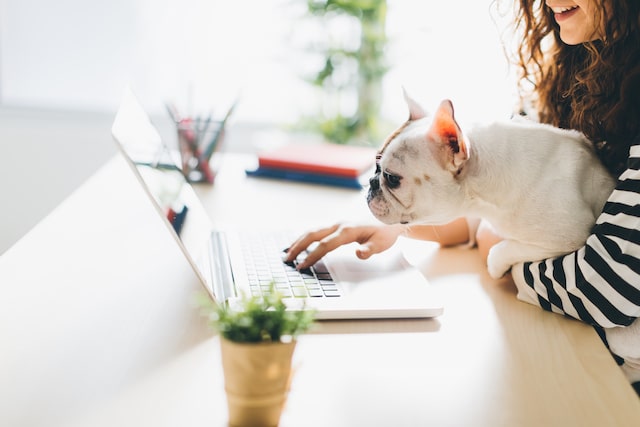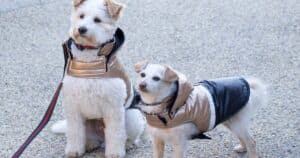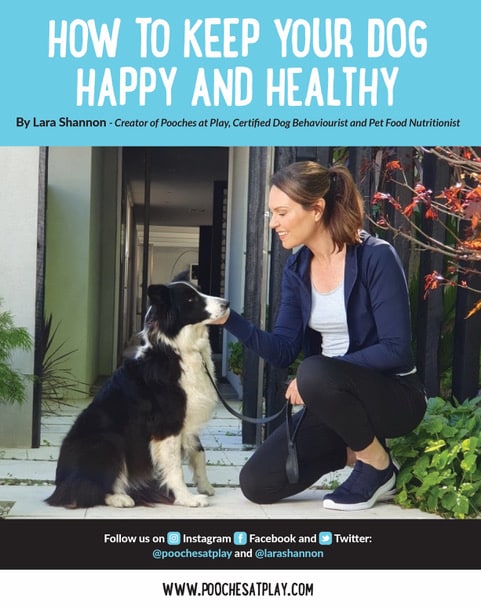

During the COVID-19 restrictions many pets enjoyed more attention and company from their human family than ever before. However, as people return to work and school, we are likely to see a big rise in separation anxiety and other separation related behaviours in our dogs, so it is important you prepare your dog for your return to work as soon as possible.
To help reduce separation anxiety in pets and ensure a smooth transition back into ‘real life’ as the restrictions begin to lift across the country, here are some tips of my key tips to help, along with some advice from PETstock Vet Dr Sasha Nefedova.
Know if your dog is displaying signs of anxiety
For any animal that already suffers from anxiety the transition of you going back to work will be difficult. Even for dogs that have not shown any pre-existing signs of anxiety, being at home with the family every day to suddenly only mornings and nights is likely to take an emotional toll on your pet.
Signs of anxiety in pets include trembling, licking of lips, pacing, increased drooling or salivation, shaking or a decrease in appetite, vomiting and diarrhoea, so look out for these and other symptoms of anxiety so you can talk to your Vet or a dog trainer/behaviourist to help as soon as possible. This problem does not go away, it only gets worse.
Other signs that your dog is suffering from anxiety (or boredom!) when left alone is destructive behaviours such as digging, chewing, trying to escape, barking etc. It is important that you do not punish your dog for this behaviour, they are trying to tell you they are anxious, bored or not getting the mental and physical stimulation and exercise they need, so it is up to you as their owner to ensure their needs are being met to help keep this behaviour at bay.
Create some independence with ‘alone time’
Establishing a strong daily routine and some alone time to re-build their independence helps ensure your dog can have a sense of safe familiarity when you return to the office.
While working at home, it is recommended that you physically distance yourself from your pet between three to five times a day, ideally building up the length of time they are alone so they start to get used to it again.
If you are at home all day you can still do this by placing your dog or cat in a quiet room away from you and your workspace, or in the backyard, and create a positive association with this by leaving them with a raw, meaty, appropriate-sized bone, a long lasting chew or interactive toy. Crate training can be good for this, as long as you train them properly and never send them there in punishment.
Create more routine with your daily exercise
Some dogs are getting more exercise than ever before. While this is great, it can also set up expectations that you can no longer meet when you are back to work. To prepare your dog for your return to work, start getting into a more sustainable walking routine, ideally first thing in the morning and again at the end of the work day if you aren’t already. By doing this you will help to establish a routine that they are familiar with when you return to work, rather than them expecting a walk(s) throughout the day.
Of course it is vital that your dog’s exercise continues in the same way when you return to work. Not only does this help with anxiety and boredom, it will help keep your fitness levels up as well. If you can’t maintain the exercise they need for their age, breed and size, then consider hiring a dog walker or using doggy daycare once your return to work.
Interactive toys and puzzles
Enrichment toys such as Kong’s, Aussie Dog Home Alone, or food puzzles helps provide pets with the extra mental and physical stimulation and exercise that so many dogs desperately need. Don’t forget your cats and rabbits also need this to keep them healthy and happy too.
Giving your dog a ‘job’ to do and tapping into their sense of smell by using interactive toys and puzzles is a great way to help keep anxiety or boredom at bay, and plays an important part in ensuring they have a whole raft of environmental enrichment in place to keep them happy.
Calming sprays and accessories
Calming pheromone sprays, collars and diffusers such as Adaptil for dogs and Feliway for cats may assist in helping to reduce anxiety in your pets. They are great in the home and also for car travel anxiety.
A Thundershirt can also help if your dog is extremely anxious. It is an anti-anxiety weighted coat for dogs, that works to calm their nerves if they are feeling anxious, overexcited or fearful; particularly during winter when there is greater chance of thunderstorms, heavy rain, or hail. The gentle, constant pressure of a Thundershirt has a calming affect on a dog’s nervous system and is a safe and drug free solution to help combat your dog’s anxiety.
Play soothing music on the radio
Music can help some pets cope with anxiety as calming music in the background is an effective distraction from the silence or can help to mask outside noises that might trigger anxiety.
While you are still working at home, test how your dog responds to calming music. If they sleep and don’t present any signs of feeling anxious, then leave some music playing throughout the day when you leave them alone as another way to help your dog prepare for your return to work.
Speak to a vet behavourist or trainer
If your pet’s is suffering from anxiety, or it gets worse, it is important to seek the advice of a vet, ideally a vet behaviourist, or experienced dog trainer to help provide some solutions, which may include natural or other medications.
Editors Note: In my opinion, medications should not be the first point of call as they can often mask the underlying issue, so it is important that you prepare your dog for your return to work by ensuring they have the independence training, plenty of mental and physical stimulation when you can’t be around and have tried some of the other tips from here or our separation anxiety articles first as well.
However, if it is deep seeded problem or a genetic issue, then medication can help in the short term as you work on training and other techniques to assist and meet their needs.
About the Author: Lara Shannon is a NDTF certified dog behaviourist and trainer, Executive Producer and Host of Pooches at Play on Channel 10 and editor of Poochesatplay.com. Lara also runs her own dog training and boarding business in Melbourne’s Bayside area and is the Author of Eat, Play, Love Your Dog.

Tips for preparing a raw food diet for your pet


Winter safety for dogs – Top Tips


Bladder Stones in Dogs and Cats

Receive a FREE copy of the E-Book “How to Keep your Dog Happy & Healthy”


Get your paws on Lara Shannon’s best selling books ‘Eat, Play, Love (your dog) and World of Dogs.
Available in Australia, USA, UK and Canada.